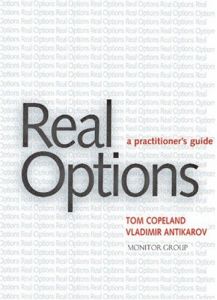
Real Options
A Practitioner's Guide
Recommendation
The phrase, "stochastic differential equations" may not trip off your tongue and you may not initially see the joy of learning that replicating portfolio value = mV + B. Yet Tom Copeland and Vladimir Antikarov guarantee that their book is a practical, everyman’s guide to the sometimes serious math world of Real Options Analysis (ROA). Thanks to the availability of personal computers and modeling software, everyone can now use ROA. Before PCs, only doctoral students of finance or economics would have been safe attempting it. Sure, ROA is harder than the traditional valuation methods or Net Present Value (NPV), but real options allow you to understand the full value of an asset by taking into account the factors of flexibility, risk and uncertainty. Company case models, the theory behind ROA and equations are all showcased in the book. This can be a challenging text, but getAbstract.com strongly recommends it to all CFOs and anyone charged with evaluating business strategies.
Summary
About the Authors
Tom Copeland is the managing director of Corporate Finance at Monitor Group. He is the co-author of Valuation, Financial Theory and Corporate Policy, and Managerial Finance. Vladimir Antikarov joined Monitor Group in 1992. With Copeland, he has developed methodologies and led the building of software tools to apply real options in the management of R & D, product development, foreign investment analysis, investment in switching capacity and other applications.







Comment on this summary